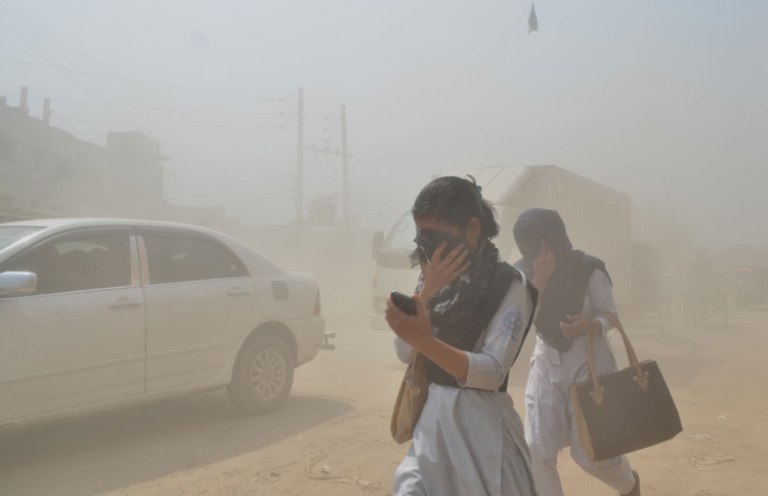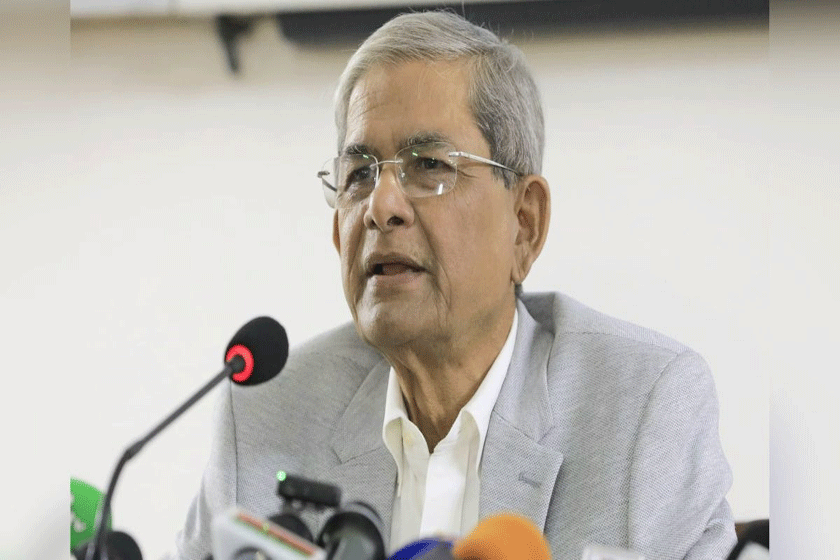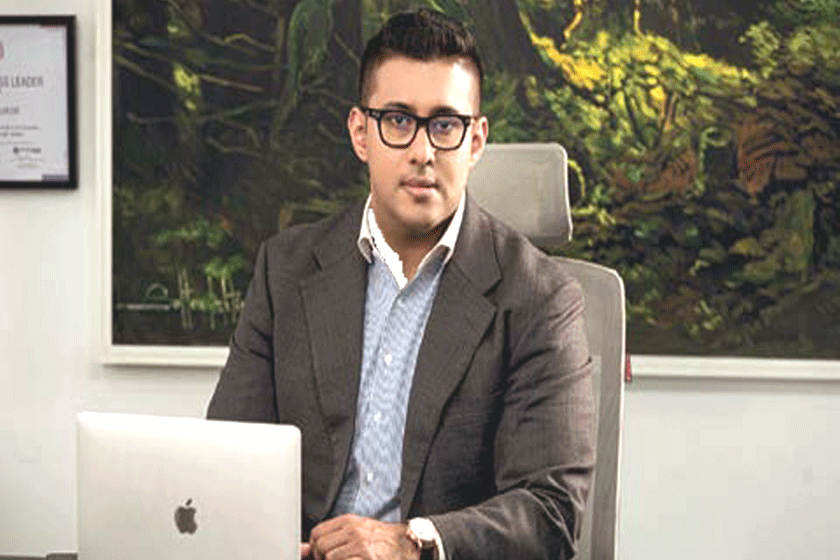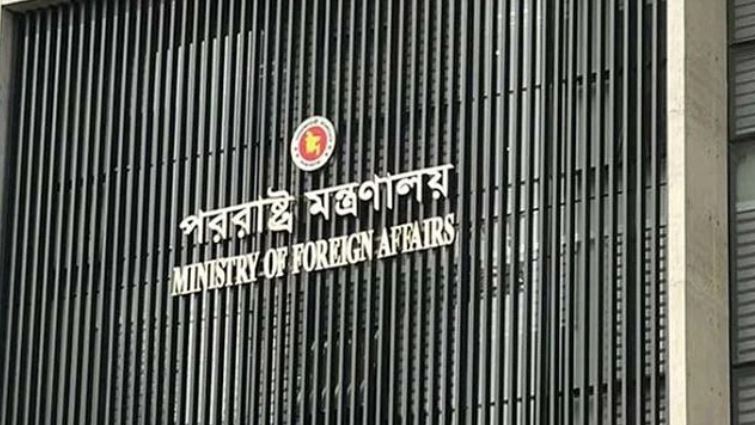
Dust pollution reaches an alarming stage in Dhaka and many deaths as well as several million cases of illness occur every year due to the poor air quality. (File photo) COURTESY
*Brick kilns, construction activities continue to defile city
*Matuail landfill emits about 16 tons of methane every hour
Dhaka's air pollution has reached the extremely dangerous level when it consistently been one of the worst cities in the world, with the World Air Quality Report 2021 ranking Bangladesh the worst country in air quality and Dhaka the second most polluted city. In addition, Dhaka has now become the world's noisiest city, according to a recent report released by the United Nations Environment Programme.
Apart from nearly 320 brick kilns located around Dhaka coupled with massive construction activities, methane emissions from the Matuail landfill have been identified as a major polluter.
According to a report published by a local daily, the government formed a committee to look into the methane emission issue at the landfill in 2020, but it is yet to collect any data or make any visible progress.
According to a study by Canadian global emission monitoring company GHGSat, the Matuail landfill is emitting about 16 tons of methane every hour. This makes it the fourth highest source of methane emissions among landfills in the world.
The colourless and odourless methane is an extremely potent greenhouse gas, and the constant emissions are a leading driver of the increasingly sweltering summers in the country over the past few years.
This is not the first time that the dangerous levels of methane emissions at the Matuail landfill have been brought under the spotlight. GHGSat in 2020 reported that the landfill was emitting four tons of methane each hour.
In the wake of the earlier report, the Department of Environment (DoE) formed a 15-member committee to look into addressing the methane emission problem. However, financial hurdles have stopped the committee from even confirming how much methane is actually being emitted from the landfill.
Initially, the Bangladesh Space Research and Remote Sensing Organization (SPARRSO) was asked to analyse the satellite data from GHGSat. However, the plan was cancelled because the cost was prohibitive, said SPARRSO Chairman Md Zafar Ullah Khan.
“We contacted GHGSat to avail of the satellite data, however, their asking price was so high that we had to move away from this plan,” he said.
Later, private organisation Waste Concern was given the task of measuring methane emissions from the Matuail landfill. The second and last meeting with the organization took place on July 14, 2020, and since then there has been no progress.
Ministry of Environment, Forest, and Climate Change Secretary Mostafa Kamal said he was not aware of any development in measuring methane emissions at the landfill since he assumed his position in June 2021.
“A meeting might have been convened under one of our additional secretaries, but I have not heard any recent update over this issue,” said Secretary Kamal.
Mirza Shawkat Ali Mirza, director of climate change and international convention of the DoE, is heading the project to measure the methane emissions.
“Waste Concern has been given the task of measuring the methane emissions from Matuail landfill. However, due to some procurement complications, it hasn’t progressed much. But we’re working on it and soon it will be over,” he said.
When asked for comment on the GHHSat 2021 report, the official expressed scepticism over the accuracy of the organization’s data as it was collected by satellite.
Dr Ahmad Kamruzzaman Majumder, professor at the department of environmental science at Stamford University Bangladesh and member of the DoE committee, said the nature of methane gas makes it more traceable by satellites than from the ground. Methane is three times lighter than CO2.
“We conducted a study from Stamford University a year ago at many locations of Dhaka, including the Matuail landfill. We found that the presence of methane was in the tolerable range. But here is the thing, since methane is such a light gas, it rises up in the atmosphere very quickly after production. Thus, on ground data is not 100% reliable,” he said.
“Right now, the problem is we don’t have any database regarding methane emissions. We neither can accept nor deny such reports of international organisations. That is why a complete database with a combination of both on site and satellite data is very important to assess the real situation,” he added.
GHGSat analysed satellite data of 47 countries across five continents from 500kms above the surface of the Earth.
The organization is planning further study of other methane emission hotspots in Bangladesh, such as the Aminbazar landfill at Savar.
Dhaka South City Corporation (DSCC), the authority responsible for looking after Matuail landfill, on November 25 acquired equipment including gas analysers, drones, and leachate measuring instruments to “monitor glitches in the current waste management system.”
Sufiullah Saddik Bhuiyan, executive engineer of waste management of DSCC, said: “these instruments will be used to measure detrimental gases like methane and the data will be disclosed on our website to make it available to the public.”
Asia is the largest emitter of methane, generating 69% of the methane in the world. It also stands first in landfill emissions with 55% of methane emissions, with India alone accountable for half of these emissions.
The largest sources of methane emissions in the world were the landfills of Buenos Aires which are emitting 36 tons of methane per hour, followed by Hong Kong with 27.5 tons, and Mumbai with 20.2 tons methane. After Dhaka, Lahore stands in fifth position with 10 tons of methane emitted per hour.
Construction activities
Many brick kilns located around Dhaka and other construction activities are largely blamed for polluting city. Construction activities have been going on but authorities concerned have not taken adequate measures to curb the air pollution. For example, Dhaka South City Corporation (DSCC) has started development work of Dhupkhola playground in September last year, while Dhaka Water Supply and Sewerage Authority (Wasa) is replacing pipelines in parts of Old Dhaka.
"But they are not taking any measures like spraying water to stop the dust from spreading. As a result, residents are suffering.
The capital's air remains thick with dust due to construction of residential buildings, a number of mega projects and digging of roads for installing utility lines. Locals in different areas alleged that most of these development works are going on without authorities taking any measure to reduce the dust menace.
Though the government on January 17, 2021 issued a gazette notification amending the rules of Bangladesh Environment Conservation Act 1995, making some measures mandatory like spraying water at construction sites at least twice a day.
According to rules, authorities will have to set up makeshift sheds or boundaries during construction work and cover up trucks and vans while carrying construction materials like bricks, cement and sands. They also have to keep all construction materials covered and refrain from keeping materials like sand, bricks and dug-up earth on roads or footpaths.
But most government organisations and individuals do not follow the instructions. As a result, residents continue to suffer.
"Prolonged exposure to dusty air may lead to lung cancer or interstitial lung disease [ILD]," said Kazi Saifuddin Bennoor, assistant professor (respiratory medicine) at NIDCH to a local daily.
ILD reduces the amount of oxygen in the body, and can cause death, said Bennoor, also joint secretary of Bangladesh Lung Foundation.
"Both the toxic air and dust pollution can cause diseases like asthma, bronchitis, chronic obstructive pulmonary disease, nasal allergy and rhinitis," he said, adding that two more diseases -- silicosis and asbestosis -- have also increased recently.
Workers involved in stone crushing without safety measures are exposed to silicosis, while those in the ship-breaking industry may contract asbestosis, he said.
Dr Abdus Shakur Khan, treasurer of Bangladesh Lung Foundation, said, "We are all being affected by air pollution."
He said there are two types of air pollution -- outdoor and indoor.
People who stay at home or work at office are also being affected due to air indoor pollution, which generates from dust and damp weather, he said.
Khan said even people with good lung condition are at risk due to the severity of air pollution.
According to a study conducted by Stamford University's Center for Atmospheric Pollution Studies from 2016 to 2021, Dhaka residents have inhaled clean air for only 38 days in the last six years.
The study highlighted the gravity of the air pollution that over two crore people of the city are exposed to every day.
For the last six years, the average AQI (Air Quality Index) score in Dhaka has been 219, which falls in the category of extremely unhealthy, the report said. The permissible limit of clean air is AQI 0-50.
Dust generated from development work contributes to 30 percent of air pollution, while industries and brick kilns are responsible for about 29 percent.
As per the World Health Organization, air pollution kills an estimated seven million people worldwide every year, largely as a result of increased mortality from stroke, heart disease, chronic obstructive pulmonary disease, lung cancer and acute respiratory infections.












0 Comments